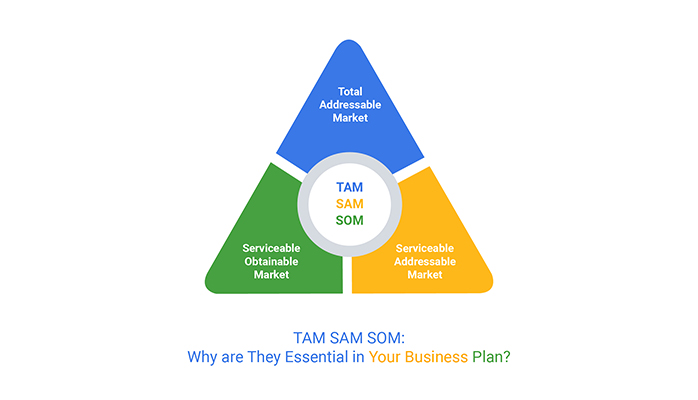A breakdown of a company’s TAM, SAM, and SOM in their marketing strategy is a common (and critical) absence in most business strategies. We’ve observed from examining a number of business plans over the years that most organizations and plan proposers don’t understand the definition or significance of SAM, SOM, and TAM.
Do you understand what these acronyms mean? However, you are not alone; many business owners are unaware with these notions.
What is TAM?
The complete market for your product is known as TAM, or Total Addressable/Available Market. This includes everyone in the globe who might purchase your goods, regardless of market rivalry.
What is SAM?
The market segment you could purchase is referred to as the SAM, or serviceable available market. Your SAM would be the portion of the TAM that speaks the language that your product is created for, for instance, if your product is only accessible in one language.
What is SOM?
The portion of your SAM known as the “Service Obtainable Market” (SOM) is where you will really be able to sell your goods. This is essentially the target market you’ll be trying to sell to in the beginning.
How do you identify TAM, SAM, and SOM?
The amount of market research needed to determine your TAM, SAM, and SOM will depend on your product and market potential, but after you’ve done that via your market analysis, you’ll have a clearer notion of the percentages that correspond with each area.
Why is identifying your SOM important?
Establishing your SOM, or target market, is crucial since basing your marketing strategy on your TAM, or everyone, would be a massive waste of money and time. Focusing your reach will be made easier by determining precisely who you believe will purchase your goods.
What’s an example of TAM, SAM, SOM?
In your city, you’re opening a concierge business with the goal of helping busy individuals with duties and errands.
Your town’s potential customers would include all those who could want assistance with chores and errands. This is known as the TAM (total available market). If your town has 150,000 residents, market research may reveal that 33 percent of that population would be interested in your firm (or 50,000 people). By taking into account those who are under the age of 18 and other demographics who are unable to use your services, you may arrive at this figure.
The percentage of those 50,000 that your existing business strategy is aiming for would be your SAM (serviceable available market) (this will be outlined in your business plan). For instance, your company concept concentrated on catering to folks between the ages of 35 and 55 who had young children and extra money. If you later learn that there are 20,000 of them, your SAM will be equal to 40% of your TAM.
The percentage of your SAM that your business model can now and reasonably serve is your SOM (serviceable attainable market). How much of your SAM (20,000 people) can you really reach in the first two to three years if you just have three employees—you and two others—and can only serve residents of a 2-mile radius around the city centre?
Let’s suppose your business can efficiently serve 100 clients each month or 1,200 clients annually. This indicates that your SOM represents roughly 6% of your SAM.
Smart investors will ask you for these elements in your business plan if you’re looking for money, and they’ll want you to be able to support your figures. This is why doing some preliminary market research is crucial—and even advised—before you start creating your company strategy. It validates your market potential for you.
I hope this helps to cut through some of the market reach acronym confusion!
Leave us a comment or further questions. We would be glad to help

